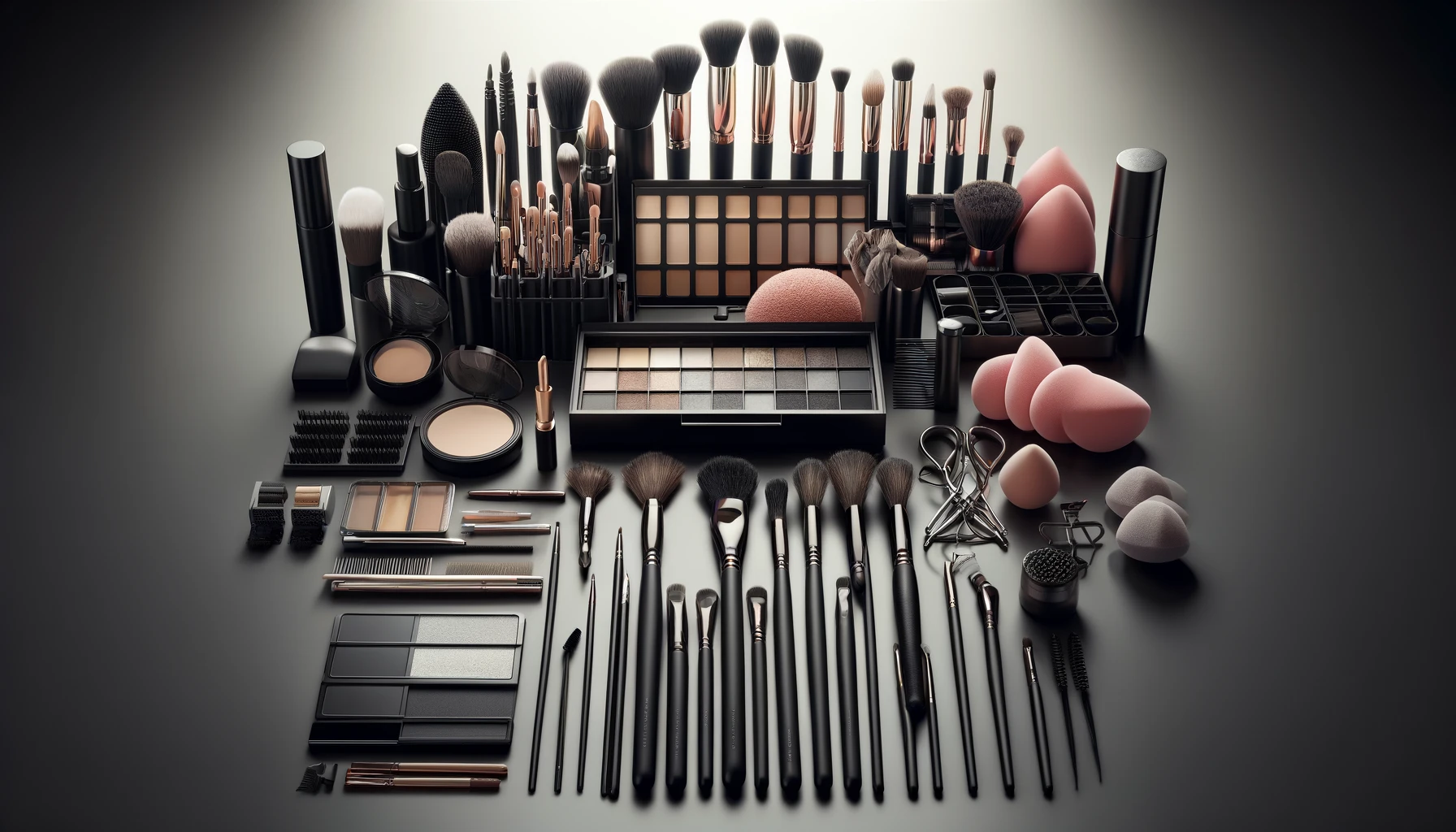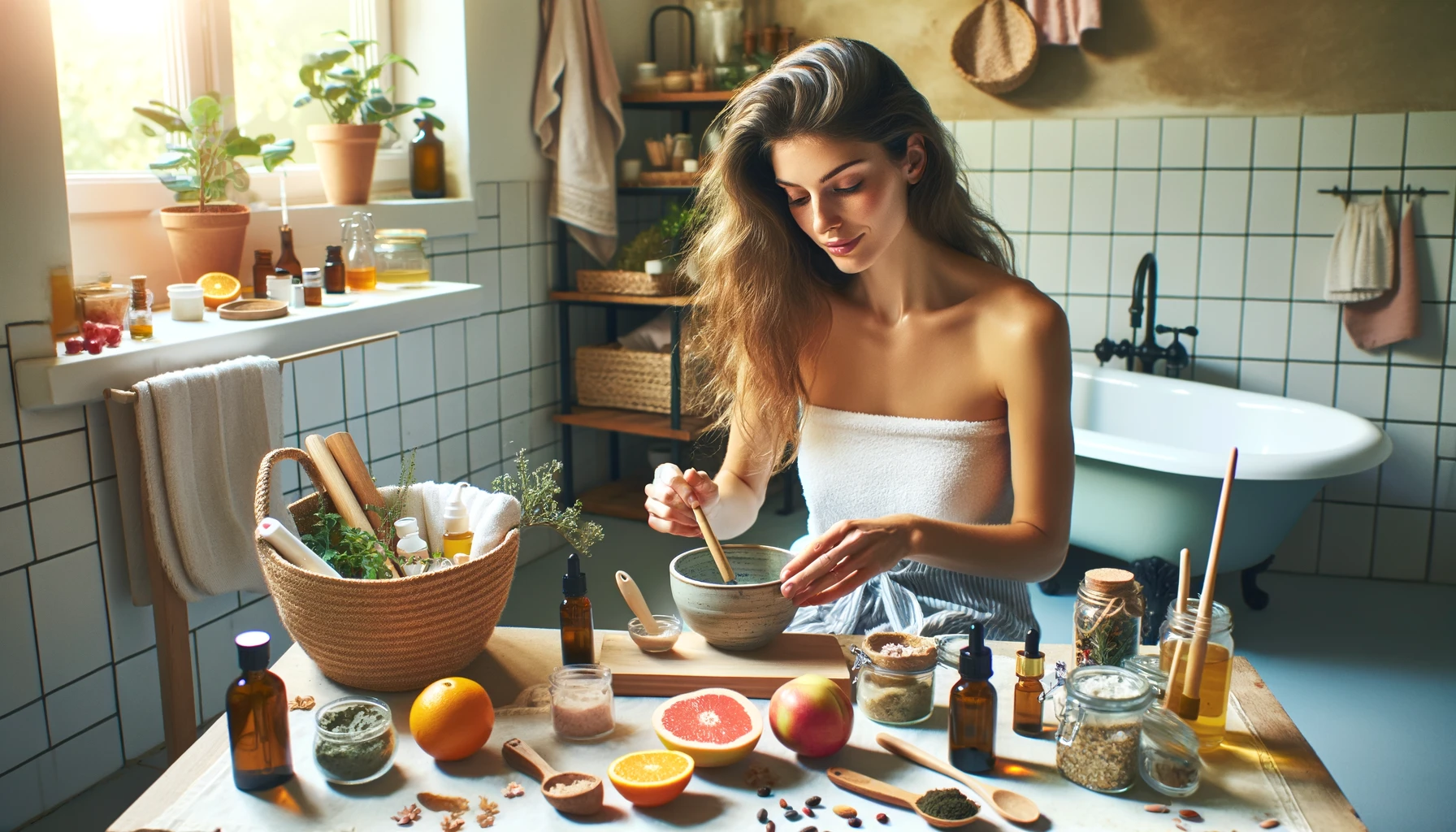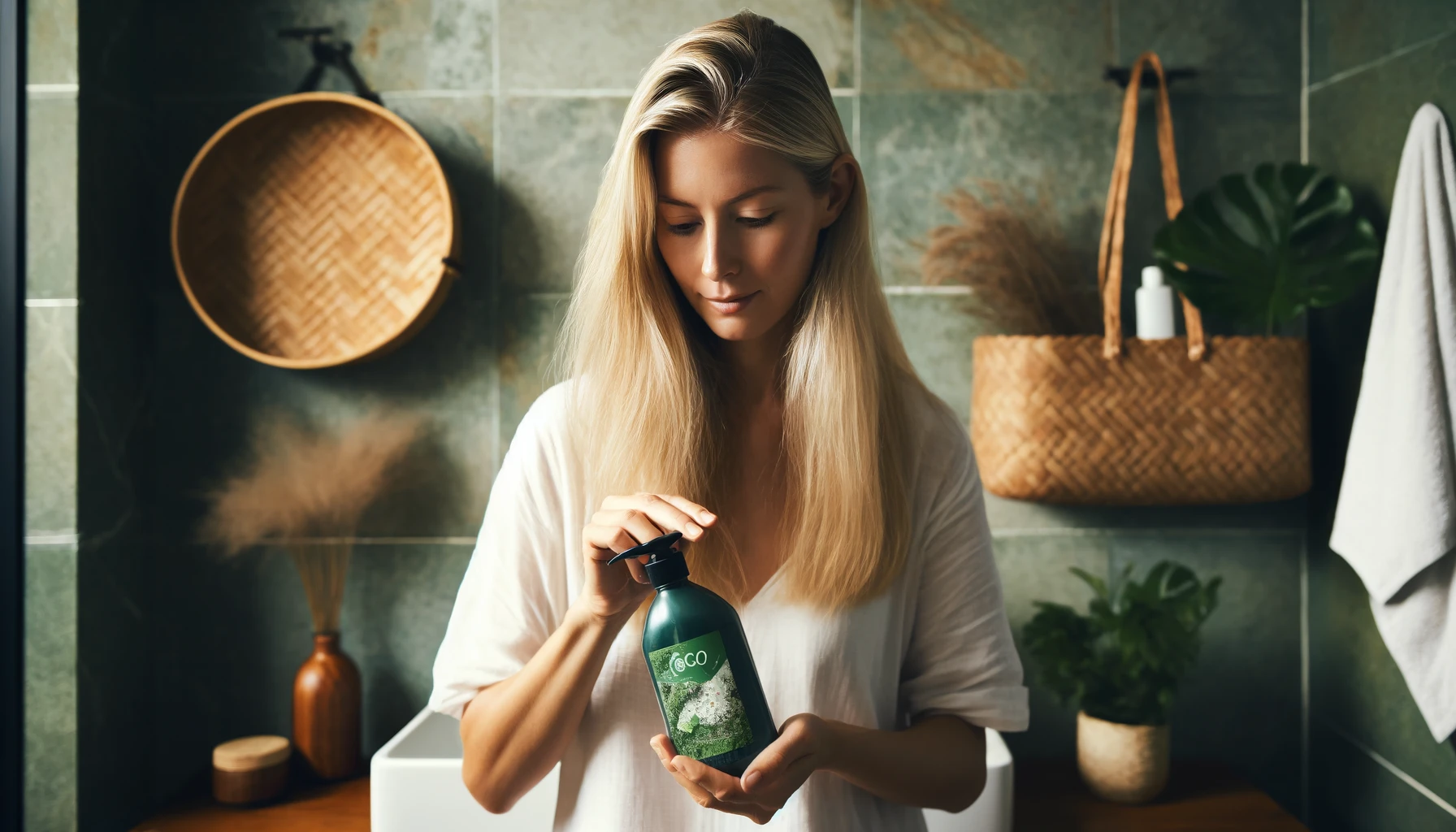
Mastering Makeup: Techniques and Tools from Affordable Brands
Research and select affordable makeup brands
When it comes to mastering makeup techniques and tools without breaking the bank, the first step is to research and select affordable makeup brands. This is essential as it allows you to find brands that offer a good range of products at budget-friendly prices.
To begin your research, start by browsing through online websites. Many popular beauty retailers offer a wide selection of affordable makeup brands. These websites often provide detailed product descriptions, customer reviews, and ratings, making it easier for you to gather information and make informed decisions.
While conducting your research, pay special attention to customer reviews. They can give you valuable insights into the quality, affordability, and availability of various makeup brands. Look for brands that consistently receive positive feedback from customers. This will help you narrow down your options and create a list of brands that stand out.
Additionally, consider factors such as the variety of products offered by each brand. Look for brands that offer a comprehensive range of makeup products, including foundations, concealers, blushes, eyeshadows, mascaras, and lip products. This way, you can find all the essentials you need within the same brand, simplifying your shopping process.
Lastly, affordability is a key factor to consider. Look for brands that offer competitive pricing without compromising on quality. Affordable makeup brands ensure that you can master makeup techniques without stretching your budget too thin.
By taking the time to research and select affordable makeup brands, you can confidently move forward with your makeup journey. Armed with quality products that suit your needs, you’ll be ready to explore and master various makeup techniques.
Understanding your Skin Type and Tone
Skin Type
Understanding your skin type is crucial when it comes to mastering makeup techniques. Each individual has a unique complexion, and by identifying your skin type, you can better select products that suit your needs.
There are three primary skin types:
- Oily Skin: If your skin tends to produce excess sebum, making it appear shiny and prone to breakouts, you have oily skin. Look for makeup products labeled as oil-free or mattifying to control shine throughout the day.
- Dry Skin: If your skin feels tight, rough, and flaky, you have dry skin. Opt for moisturizing and hydrating makeup products to keep your skin looking smooth and supple.
- Combination Skin: Combination skin features both oily and dry areas. Typically, the T-zone (forehead, nose, and chin) tends to be oily, while the cheeks are drier. Choose products that cater to both oily and dry areas of your face.
Skin Tone
In addition to understanding your skin type, knowing your skin tone is equally important when it comes to selecting makeup products that complement your complexion.
There are three main undertones:
- Warm Undertone: If your skin has golden, peachy, or yellowish undertones, you have a warm undertone. Look for makeup products with warm undertones, such as foundations or blush colors with a hint of orange or gold.
- Cool Undertone: If your skin has pink, red, or bluish undertones, you have a cool undertone. Opt for makeup products with cool undertones, such as foundations or blush colors with a pink or blue undertone.
- Neutral Undertone: If your skin has a balanced mix of warm and cool undertones, you have a neutral undertone. You can experiment with makeup products of both warm and cool undertones.
Tip: If you are unsure about your skin type and undertone, you can consult with a beauty expert or visit a makeup store for assistance in determining the best products for your complexion.
Building a Basic Makeup Toolkit
Mastering makeup techniques requires having the right tools for the job. By building a basic makeup toolkit, you can be equipped with everything you need to achieve flawless makeup application. Here are the essential items to include:
Makeup Brushes
A good set of makeup brushes is essential for achieving a professional look. Look for affordable options that include brushes for foundation, concealer, eyeshadow, and blush. The right brushes can make a significant difference in the way your makeup is applied and blended.
Makeup Sponge
In addition to brushes, consider including a makeup sponge in your toolkit. A makeup sponge is ideal for applying foundation, concealer, and blending products for a seamless finish. They are versatile and great for achieving a natural, airbrushed effect.
Eyelash Curler
For those who want to enhance their lashes, an eyelash curler is a must-have tool. It helps to curl and lift your lashes, making them appear longer and more voluminous. Look for a curler that fits comfortably on your eye shape and provides a gentle, yet effective, curl.
Tweezers
Tweezers are essential for maintaining well-groomed eyebrows. They help in shaping and defining the eyebrows by plucking unwanted hairs. Look for a high-quality pair of tweezers that offer precision and control.
By having these basic tools in your makeup toolkit, you’ll be well-prepared to try out various makeup techniques and achieve professional-looking results.
Mastering the Art of Foundation Application
Foundation serves as the base for any makeup look, providing a flawless complexion to enhance your natural beauty. To achieve perfect foundation application, it is essential to understand the right techniques based on your skin type and tone. Follow these steps to achieve a flawless and natural finish:
Step 1: Select the Perfect Foundation
Choosing the right foundation is crucial for achieving a seamless look. Consider your skin tone and type when selecting a foundation. Look for a shade that matches your skin tone and a formula suitable for your skin type, whether it’s oily, dry, or combination.
Step 2: Prepare Your Skin
Before applying foundation, ensure your skin is clean and moisturized. Use a gentle cleanser to remove any dirt or excess oil, followed by a moisturizer suitable for your skin type. Allow the moisturizer to fully absorb into the skin before moving on to the next step.
Step 3: Apply Foundation
To apply foundation, start by dotting a small amount of foundation on the back of your hand. This will allow you to control the amount of product you use and prevent wastage. Using a foundation brush or a makeup sponge, gently dot the foundation onto your face.
Step 4: Blend and Build Coverage
Blend the foundation outwards using gentle strokes, starting from the center of your face and working your way out. Use a patting or buffing motion to achieve a smooth and even coverage. Pay attention to areas that require more coverage, such as blemishes or uneven skin tone, and build up the foundation gradually.
Step 5: Choose the Right Technique
Understanding different techniques for applying foundation can help you achieve the desired finish. Stippling, where you lightly tap the foundation onto the skin, is ideal for dry or sensitive skin types. Buffing, where you use circular motions to blend the foundation, works well for normal or combination skin. Patting, where you gently press the foundation onto the skin, is suitable for oily skin types.
Step 6: Set Your Foundation
To ensure your foundation stays in place throughout the day, set it with a light dusting of translucent powder. This will help control shine and give your foundation a longer-lasting finish. Use a fluffy powder brush to apply the powder gently across your face.
Remember, mastering foundation application takes practice and experimentation. Each individual’s skin is unique, so don’t be afraid to adjust these techniques to suit your needs. With time and patience, you will confidently achieve a flawless complexion using affordable makeup brands.
Experiment with Eyeshadow Techniques
Enhancing the eyes through eyeshadow application is an essential skill to master. The wide range of affordable eyeshadow palettes available from various brands allows you to experiment with different colors and finishes without breaking the bank. Here are some tips to help you perfect your eyeshadow techniques:
Start with a Neutral Palette
Begin by investing in a neutral eyeshadow palette. Neutral shades such as browns, taupes, and creams are versatile and can be used to create both natural and dramatic looks. They also serve as a great base for experimenting with more vibrant colors in the future.
Learn Various Techniques
Familiarize yourself with different eyeshadow techniques, such as the classic smoky eye, cut crease, or halo eye. These techniques can transform your eye makeup and add depth and dimension to your look. Practice blending shades seamlessly for a professional finish.
Choose the Right Brushes
Invest in a basic set of eyeshadow brushes to achieve different effects. Different brushes, such as flat shader brushes, blending brushes, and pencil brushes, can help you achieve precise application and blending. Having the right tools will make a significant difference in the final result.
Start with a Transition Shade
Always begin your eyeshadow look by applying a transition shade. This is a soft neutral shade that helps to blend other colors seamlessly. Apply it to the crease using a blending brush, and then gradually build up the intensity by adding deeper shades.
Gradually Build Up the Intensity
When working with eyeshadows, it’s important to gradually build up the intensity. Start with a light hand and layer the colors little by little until you achieve the desired effect. This technique ensures that you have more control over the final look and can easily make adjustments if needed.
Experiment with Color Combinations
Don’t be afraid to experiment with different color combinations. Mixing and matching shades can create unique and eye-catching looks. Remember to consider your eye color and skin tone when choosing complementary shades to enhance your natural features.
Practice Blending
Blending is key to achieving a seamless eyeshadow look. Use a clean blending brush to blend the edges of different colors together, creating a smooth transition. Take your time and be patient, as mastering this technique will significantly elevate your eye makeup skills.
By following these tips and continuously practicing different eyeshadow looks, you will become more confident in your skills and be able to create stunning eye makeup using affordable brands. Remember, eyeshadow application is an art form, so don’t be afraid to unleash your creativity and let your unique style shine through.
Master the Art of Contouring and Highlighting
Contouring and highlighting techniques can help sculpt the face and create dimension. With a wide range of affordable contour and highlighting products available, it’s easier than ever to achieve a beautifully contoured and illuminated look.
Identify the Areas to Contour
Start by identifying the areas of your face that you want to contour. These typically include the cheekbones, temples, and jawline. By applying contour strategically, you can enhance your natural bone structure and create the illusion of shadow and depth.
Choose the Right Product
Affordable brands offer contour products in various forms, such as powder, cream, or stick. Consider your skin type and texture when selecting a product. Powder formulas work well for oily skin, while cream or stick formulas are great for dry skin.
Apply and Blend
Using a contour brush or sponge, gently apply the contour shade slightly darker than your natural skin tone to the targeted areas. Remember to start with a small amount of product and gradually build up the intensity to achieve a natural-looking contour.
Blend the contour shade well to avoid any harsh lines. This step is crucial to ensure a seamless and natural finish. Use a blending brush or sponge to blend the contour into your foundation, creating a soft transition between the shades.
Add Radiance with Highlighting
Highlighting is the perfect complement to contouring, as it adds a luminous glow to the high points of your face. Choose a highlight shade that complements your skin tone and has a subtle shimmer.
Strategically Apply Highlighter
Apply the highlighter to the high points of your face, such as the cheekbones, bridge of the nose, and cupid’s bow. These areas naturally catch the light, and highlighting them will enhance your features and give your skin a radiant look.
Blend for a Natural Glow
Just like with contouring, blending is key for a seamless finish. Use a clean brush or sponge to blend the highlighter, ensuring there are no harsh lines. This will create a soft, natural glow that looks effortless and enhances your overall makeup look.
Practice and Experiment
As with any makeup technique, practice and experimentation are essential to master contouring and highlighting. Take the time to try different products, application techniques, and placements to find what works best for your unique face shape and skin tone.
Get inspired by makeup tutorials, beauty blogs, and social media platforms to learn new techniques and stay updated on the latest trends. Remember, makeup is an art form, and finding your own style and techniques is part of the fun.
Practice and Experiment with Different Looks
Mastering makeup techniques takes practice, patience, and experimentation. Set aside time to practice different looks and experiment with various products. One of the best ways to learn and improve your skills is by getting inspired by makeup tutorials, beauty blogs, and social media platforms.
There are many online resources where you can find step-by-step tutorials and tips from professional makeup artists. These tutorials provide detailed instructions on how to achieve specific looks, whether it’s a natural everyday makeup or a glamorous evening look. By following these tutorials, you can learn about different techniques, such as how to apply eyeshadow, create the perfect winged eyeliner, or contour and highlight your face.
Beauty blogs and social media platforms like Instagram and YouTube are also great sources of inspiration. Many beauty bloggers and influencers share their makeup looks, providing insights into their techniques and the products they use. By following these individuals, you can gather ideas for different makeup looks, discover new products, and learn about the latest trends in the beauty industry.
Remember that makeup is an art form, and every individual has their own unique style. While tutorials and influencers can be a great starting point, it’s important to add your personal touch and experiment with different looks. Don’t be afraid to step out of your comfort zone and try bold colors, different textures, or unconventional techniques.
During your practice sessions, take note of the products and techniques that work best for you. Keep track of the tools and products you used for each look and how they performed. This will help you create a makeup routine tailored to your preferences and allow you to refine your skills over time.
Furthermore, it’s important to recognize that not every makeup look will be perfect on the first try. Don’t get discouraged if a particular technique or look doesn’t turn out the way you expected. Makeup is a skill that takes time to master, and it’s through practice and experimentation that you’ll discover what works best for you.
As you continue to practice and experiment, you’ll build confidence in your abilities and eventually master makeup techniques using affordable brands. Remember that the journey to becoming a skilled makeup artist is ongoing, and there’s always something new to learn. Embrace the process and enjoy the creativity that comes with mastering different makeup looks.


